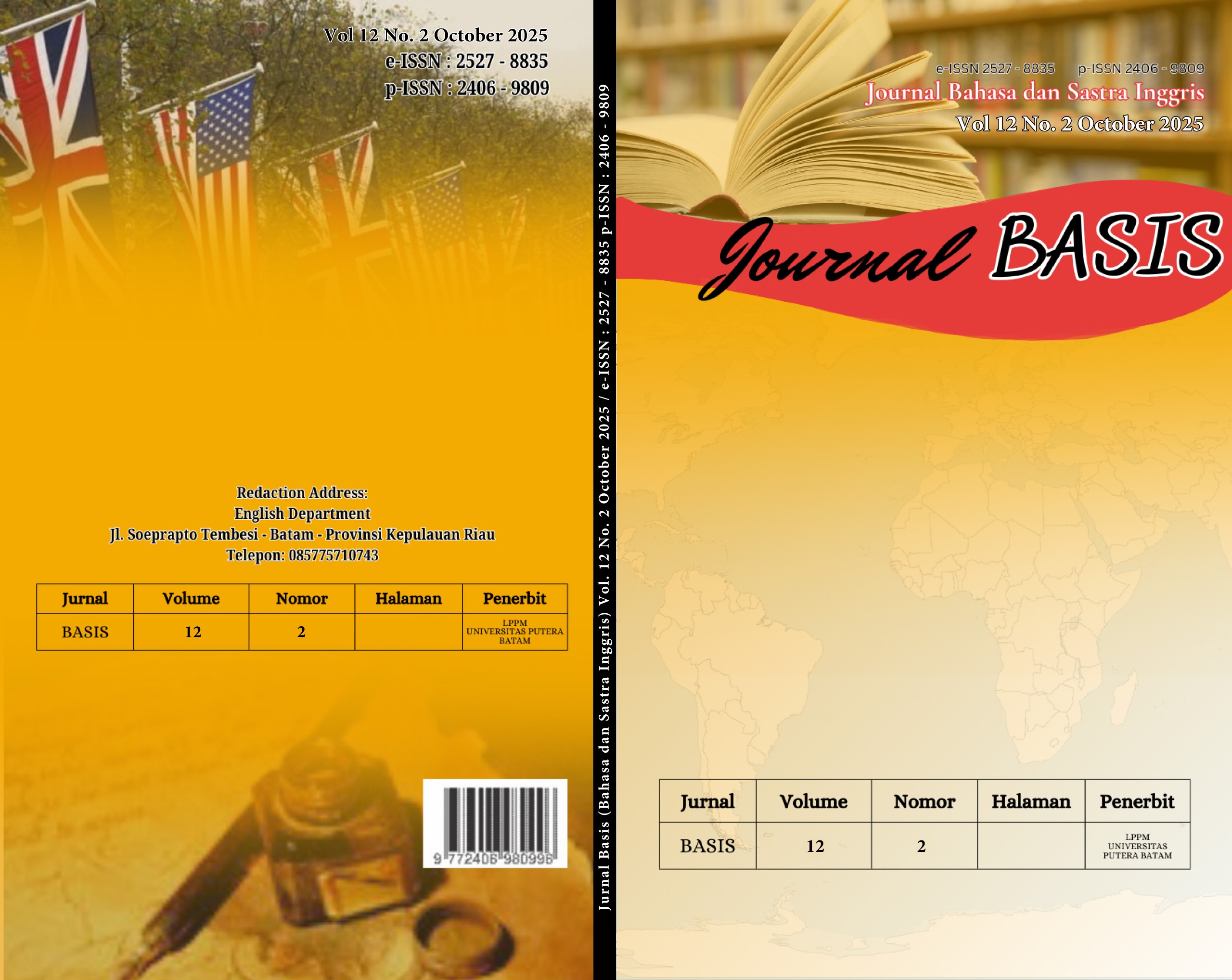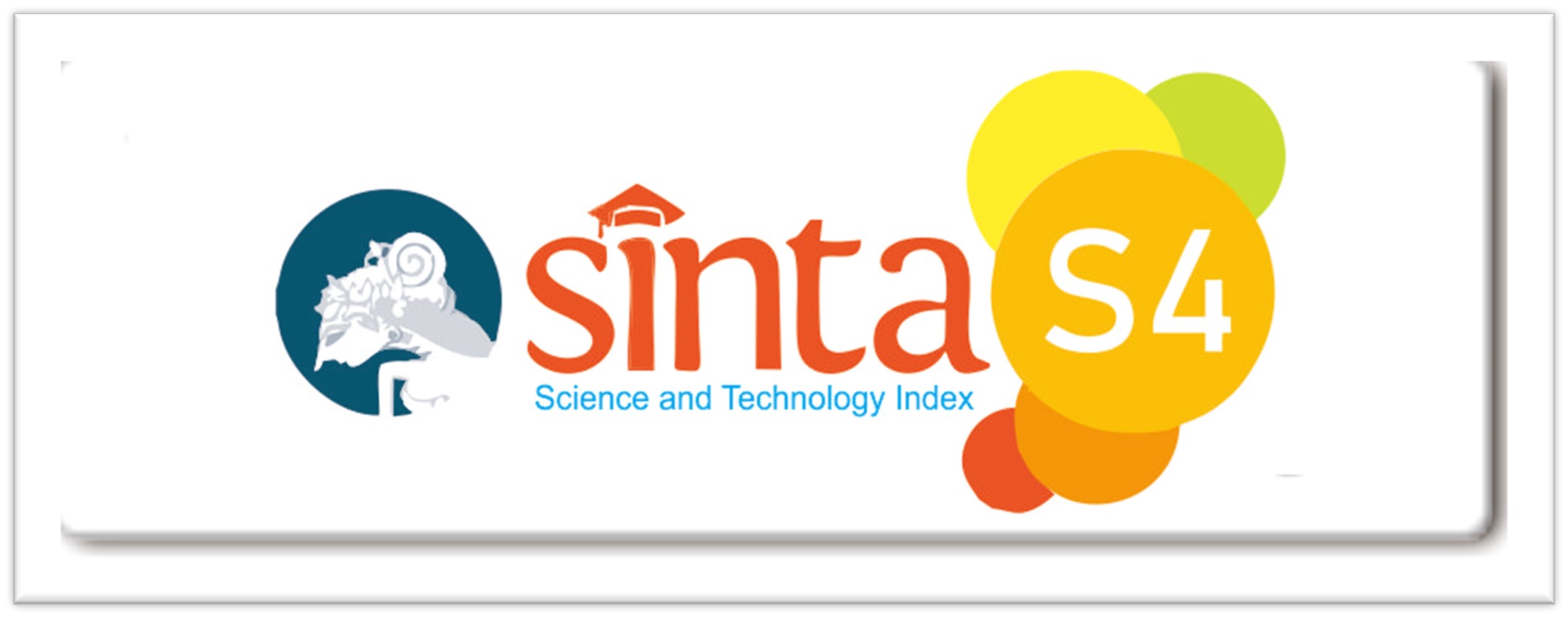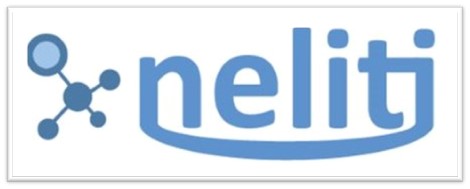FIGURATIVE LANGUAGE IN TAYLOR SWIFT’S SONGS FROM THE EVERMORE ALBUM
DOI:
https://doi.org/10.33884/basisupb.v12i2.10090Keywords:
Figurative Language, Song Lyrics, Taylor Swift, Evermore, MetaphorAbstract
This study aims to examine the use of figurative language in three songs from Taylor Swift’s Evermore album: “Willow,” “Champagne Problems,” and “Gold Rush.” Figurative language is a crucial element in song lyrics, enabling artists to express emotions and abstract ideas creatively. The study applies Perrine’s theory, which classifies figurative language into five types: simile, metaphor, personification, hyperbole, and irony. The data are taken from the official lyrics of the selected songs, supported by repeated listening to capture emotional and contextual nuances. A qualitative descriptive method is used to identify and analyze instances of figurative language. The analysis focuses on how these figures of speech function in expressing emotional depth, storytelling, and thematic complexity. The findings reveal that metaphor and personification are the most dominant types, indicating Taylor Swift’s tendency to convey feelings through implicit comparison and human-like expressions. The study highlights the artistic and literary value of popular song lyrics, affirming that they can be treated as modern poetic texts worthy of academic analysis.
References
Belkhir, S. (2021). Personification in EFL learners’ academic writing: A cognitive linguistic stance. Glottodidactica, 48(2), 7–20. https://doi.org/10.14746/gl.2021.48.2.01
Caldwell Brown, S. (2016). How Music Works. Popular Music and Society, 39(3), 381–383. https://doi.org/10.1080/03007766.2015.1073035
Colorafi, K. J., & Evans, B. (2016). Qualitative Descriptive Methods in Health Science Research. Health Environments Research and Design Journal, 9(4), 16–25. https://doi.org/10.1177/1937586715614171
Dewi, E. N. F., Hidayat, D. N., & Alek, A. (2020). Investigating Figurative Language in “Lose You to Love Me” Song Lyric. Loquen: English Studies Journal, 13(1), 6. https://doi.org/10.32678/loquen.v13i1.2548
Hilmi, R. Z., Hurriyati, R., & Lisnawati. (2018). No 主観的健康感を中心とした在宅高齢者における 健康関連指標に関する共分散構造分析Title. 3(2), 91–102.
Oktavianus, O., Ferdinal, F., Pratiwi, D. P. E., & Utami, N. P. C. P. (2024). Metaphorical Language Innovation in the Globalization Context. Humanus: Jurnal Ilmiah Ilmu-Ilmu Humaniora, 23(2), 257–281. https://doi.org/10.24036/humanus.v23i2.128863
Padillah, E. N., Firmawan, H., & Purwaningsih, E. (2016). Simile, Hyperbole, Personification and Metaphor used in Gayle Forman’s If I Stay. Jurnal Ilmiah Sastra, 4(1), 72–73.
Pfeiffer, W. S., & Perrine, L. (1978). Sound and Sense: An Introduction to Poetry. The South Central Bulletin, 38(2), 44. https://doi.org/10.2307/3188611
Putri, N. A., & Marlina, L. (2023). Figurative Language on Digital Children’S Literature in Website Poems of Poets.Org With Nature and Environment Theme. E-Journal of English Language and Literature, 12(4), 797–809.
Sembiring, V. B. (2020). Analysis of Student’S Ability in Identifying Figurative Language in Mariah Carey’S Songs. Jurnal Basis, 7(1), 101–110. https://doi.org/10.33884/basisupb.v7i1.1748
Setiawan, A. A. (2014). Figurative Language Analysis in Song Lyrics of Coldplay Band Thesis By Study Program of English Department of Languages and Literature Faculty of Cultural Studies.
Setiawati, W., & Maryani, M. (2018). an Analysis of Figurative Language in Taylor Swift’S Song Lyrics. PROJECT (Professional Journal of English Education), 1(3), 261. https://doi.org/10.22460/project.v1i3.p261-268
Tavadze, L. (2019). the Role of Irony in Text Interpretation. International Journal of Management and Applied Science, 5, 2394–7926. http://iraj.in
Wijaya, L., & Nasution, N. S. S. (2018). Language As Art and Communication Tool. Aicll: Annual International Conference on Language and Literature, 1(1), 69–74. https://doi.org/10.30743/aicll.v1i1.10













 JURNAL BASIS (BAHASA DAN SASTRA INGGRIS)
JURNAL BASIS (BAHASA DAN SASTRA INGGRIS)
